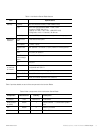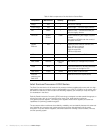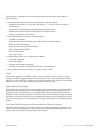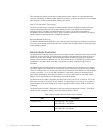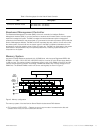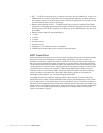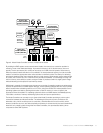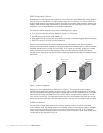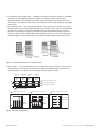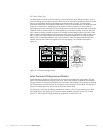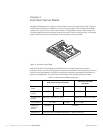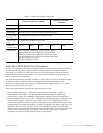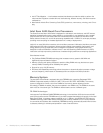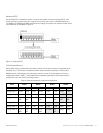
www.hitachi.com BladeSymphony 1000 Architecture White Paper 17
• Full interleave mode (or SMP mode) — Intended for use with an OS without support for the NUMA
architecture or with inadequate support for NUMA. In full interleave mode, main memory is
interleaved between CPU modules in units. Since memory accesses do not concentrate on one
CPU module in full interleave mode, memory bus bottlenecks are less likely and latency is averaged
across CPUs.
• Non-interleave mode — This mode specifies the ratio of local memory at a constant rate. Use non-
interleave mode with an OS that supports NUMA. In non-interleave mode, memory is not interleaved
between CPU modules. An OS supporting NUMA performs process scheduling and memory
allocation so that memory accesses by processors only take place within the subject node (CPU
module). An OS with APIs for NUMA also allows applications running on it to perform optimization,
taking advantage of node-localized memory accesses and enabling higher system performance.
Figure 8. Full interleave mode and non-interleave mode
• Mixture mode — This mode specifies the ratio of a local memory at a constant rate. There can be
some restrictions on the ratio of local memory, according to the NUMA function support level of
operating system in use. Figure 9 shows examples of all three types of modes.
Figure 9. Examples of interleaving
CPU Module
#0
CPU Module
#1
CPU Module
#2
CPU Module
#3
Memory
8GB
Memory
8GB
Shows segment of memory
4 node
interleave
Interleave boundary local memory 50.0%
4GB
Memory
8GB
0-1
0-0
Memory
8GB
2-1
2-0
3-1
3-0
1-1
1-0
2-0 3-00-0 1-0
2-0
4 node
interleave
3-0
2-1
3-1
no interleaved
(local
0-0 1-0
1
-
1
0
-
1
no interleaved
(local memory)
2-1
3-1
1-1
0-1
Interleave boundary local memory0%
Interleave boundary local memory 100.0%
Interleave boundary local memory0%
Interleave boundary local memory
Interleave boundary local memory 100.0%



